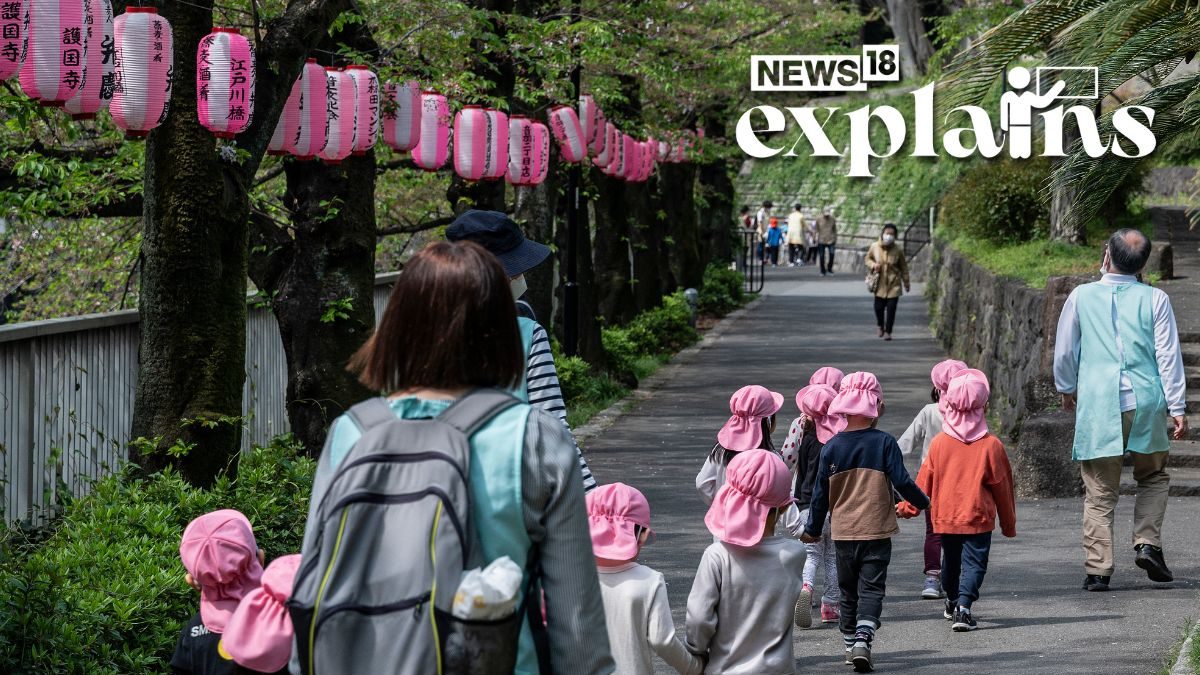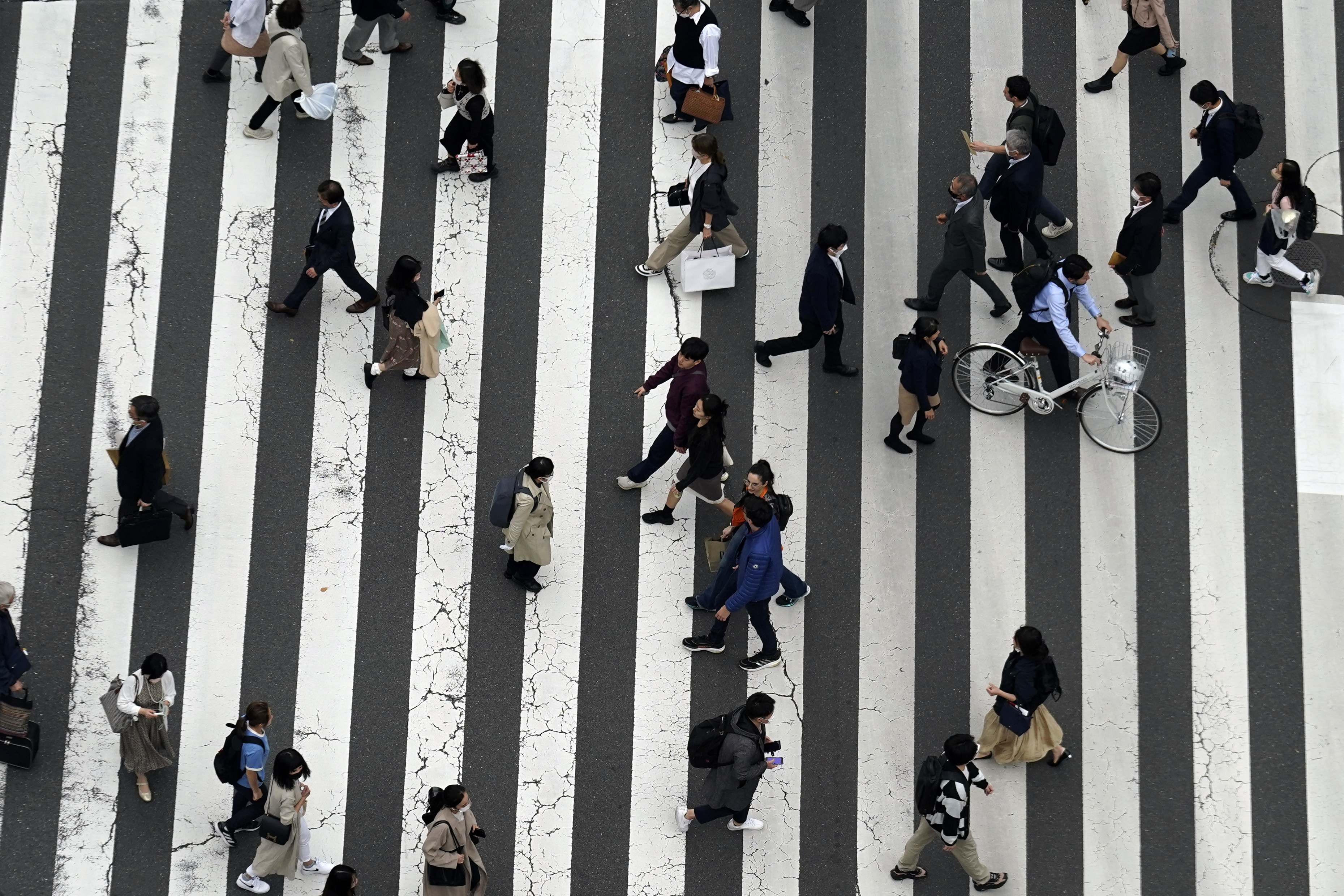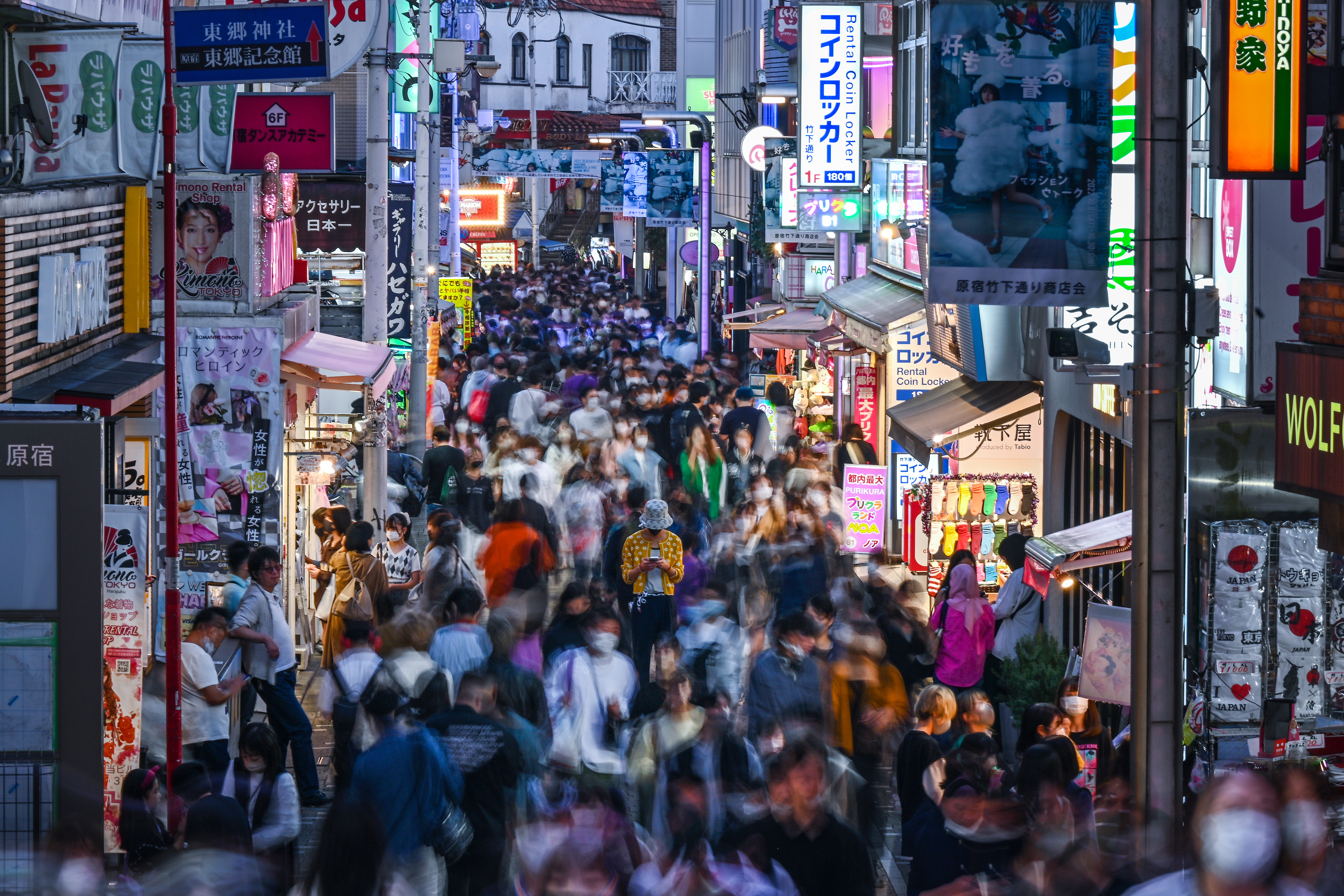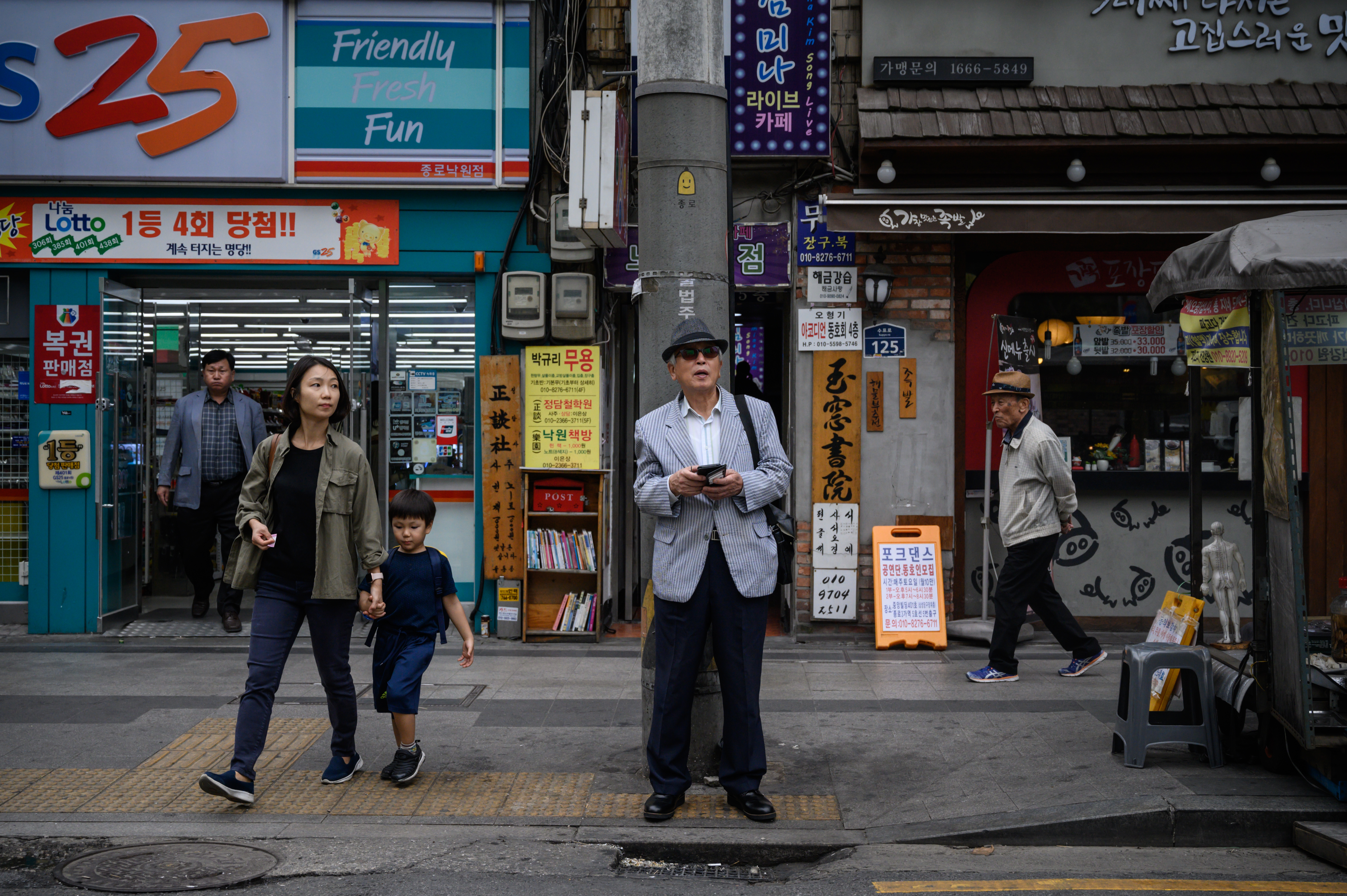Japan’s Declining Population Accelerates Demographic Crisis. Is it Boon for Immigrants? | Explained – News18

This photo taken on April 5, 2023 shows young children being escorted through a park during an outing in Tokyo. (AFP)
Japan has an expansing elderly population which is putting a burden on the shrinking workforce to fund pensions and health care of the rising population of the elderly people
Japan population fell by more than 8 lakhs in the past year signalling signs of growing population crisis in the country. The population of Japan fell to 122.4 million in 2022, decreasing by 0.65 percent, falling for a 14th straight year, according to government data.
The number of foreign residents rose by nearly 289,500 compared to the previous year, a significant jump of a 10.7% jump.
After peaking in 2008, Japan’s population has since shrunk steadily due to a declining birthrate. The country saw a record low of 771,801 births last year. And for the first time, all prefectures across the country saw a decrease in the number of Japanese nationals.
Demographic Concern
Japan has a rapidly declining population and deaths have outpaced births in Japan for more than a decade. The demographic concern for the world’s third-largest economy comes at two levels- lower birth rate and a large elderly population.
The country has an expansing elderly population which is putting a burden on the shrinking workforce to fund pensions and health care of the growing population of the elderly. Japan’s life expectancy is among the highest in the world, nearly one in every 1,500 people were age 100 or older, according to government data.
To add to the problem, the birth rate of Japan is one of the lowest in the world. Studies have predicted that in eight years, the number of women of child bearing age will fall to a point where population decline cannot be reversed.
Japan’s population has been in steady decline since its economic boom in the 1980s, with a fertility rate of 1.3, far below the replacement rate of 2.1 required to maintain a stable population.
Japan Prime Minister Fumio Kishida has warned that the country is “on the brink of not being able to maintain social functions” and added that the time to act is now.
How is Japan Govt Tackling it?
Japan Prime Minister Fumio Kishida has set tackling the declining birth rate as one of his top policy goals. He has pledged to secure annual funding of about 3.5 trillion yen ($25.2 billion) over the next three years for a new child care package, which includes financial assistance to help child rearing, preschool education and nursing care services.
In the recent years, Japanese authorities have pushed for more immigration inviting foreign residents and workers.
In 2018, Japan approved a policy proposed by former PM Shinzo Abe that created new visa categories to allow over 3.4 lakh foreign workers to take high-skilled and low-wage jobs.
In 2021, the Japanese government announced it was considering allowing some foreigners to stay indefinitely.
As per reports, Japan requires about four times more foreign workers than the 2020 level by 2040 to achieve the government’s economic goals.
Similar concerns for Neighbours
Other Aian countries like China, South Korea, Singapore and Taiwan are also experiencing demographic crises and are struggling to encourage young people to have more children.
China’s population shrank last year for the first time in more than six decades, official data showed Tuesday, and it is expected to be overtaken by India this year as the most populous nation. China is expected to lose nearly half of its population by 2100, falling from more than 1.4 billion to 771 million inhabitants.
South Korea has undergone the most rapid fertility decline in recorded human history. The birth rate in the country has fallen steadily since 2015 and the deaths have exceeded births for the third year in a row. South Korea is the only country in the world to register a fertility rate of less than one child per woman.
For all the latest world News Click Here





